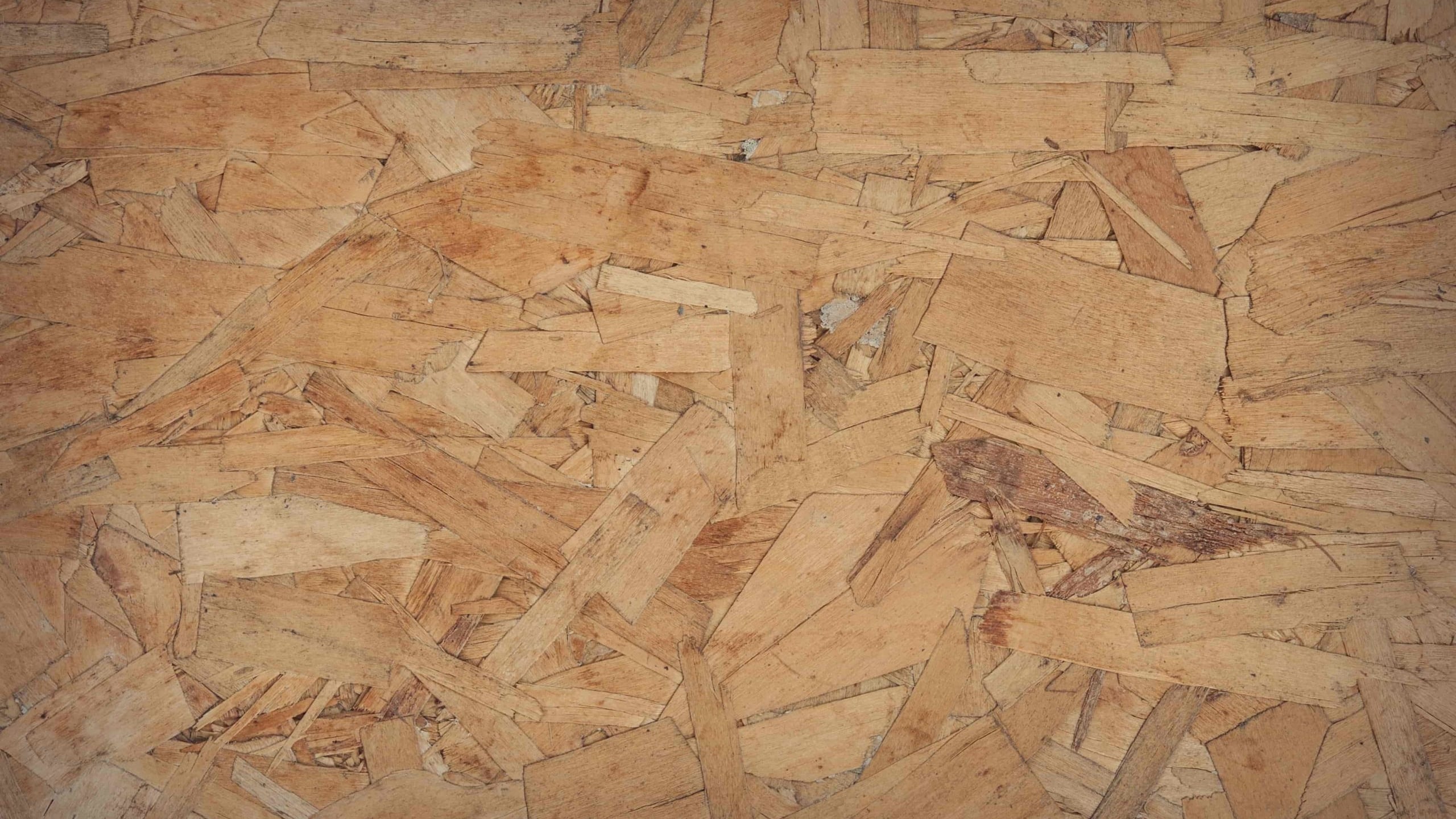
Considered aesthetically pleasing and warm, wood is the most popular material for French homes and the most widely used in the furniture industry. Born of the desire to recycle sawing and machining waste (sawdust and shavings), wood derivatives are a more economical alternative to solid wood. If the possibilities already seem endless with solid wood, thanks to its different species (hardwoods, softwoods) and qualities, the range of woods is even wider with processed woods. Solid wood panels, plywood, particleboard – what are the differences between these different wood-based materials?
These panels are obtained by assembling planks, battens or pieces of solid wood, giving the material a natural appearance and the aesthetics of untreated wood, especially single-layer panelled wood. This category also includes glulam, also known as multi-layer, which is the result of pieces of solid wood whose wires are glued together perpendicularly, enabling the production of large parts. Solid wood panels have high dimensional stability and mechanical strength.
Plywood is obtained by stacking and gluing an odd number of layers of veneers (sheets of wood peeled from the same tree trunk) or plies with perpendicularly crossed wires. This design provides strength and dimensional stability, considerably reducing the risk of distortion of the plywood panel, which is lighter, more flexible and more stable than natural wood. Its thickness generally varies between 1 mm and 50 mm. The core of the material is made of ordinary wood, but it is also very aesthetic, as it is usually trimmed with noble woods.
Obtained by gluing and pressing wood particles such as shavings, sawdust or wood dust, particleboard, also known as chipboard, is extremely easy to use. Aesthetically unappealing with its irregular, unsmooth edges, it is a very heavy and compact material in relation to its thickness, but it has the advantage of being inexpensive.
Veneered particleboard, which includes melamine and laminate panels, is made from chipboard on which a decorative layer is added. The difference between melamine and laminate lies in the manufacturing process: laminate is created by superimposing at least 8 layers of kraft paper coated with hot-melt resins, whereas in the case of melamine panels, the chipboard is covered by a single sheet of melamine-coated paper.
Strand board, more commonly known as OSB (Oriented Strand Board), is made up of several layers of large oriented strands bonded together using melamine-urea-formaldehyde (MUF), phenolic or polyurethane glues before being pressed. OSB panels have excellent mechanical properties, almost equivalent to those of plywood. It’s a sturdy yet lightweight material that’s easy to handle. There are four standards (OSB1, OSB2, OSB3, OSB4), depending on the desired strength and use. With their very rough appearance, lamella panels are a solid material that holds up well to drilling and sawing processes.
Made from ground, dried, glued and pressed wood fibers, fiberboard is renowned for its homogeneous structure, high density and strength. Due to the manufacturing process used, they can be produced in different thicknesses. There are four main categories of fiberboard based on density: soft, medium density (MDF), hard and extra-hard.
Wood veneer, which is a thin sheet of solid wood (species), is a real wood veneer glued to MDF, plywood, particleboard or batten board. Fine wood veneer on panels has all the qualities of wood, but is easier to handle and cut. This results in a more dimensionally stable substrate than solid wood, while retaining its visual appeal.
From solid wood panels and plywood to OSB and wood veneers, wood-based materials require protection to optimize their durability. The expertise of the ‘Lineo network in the wood and wood derivatives sector, combined with its multi-solutions technicality, covers all fields of application: from protection to decoration of wood substrates.
Professional products from the B’Lineo by ‘Lineo range of professional products are perfectly suited to processed woods, ensuring that their qualities are preserved. Our B’Linéo range is also an ideal ally for creating personalized spaces: colorless varnishes to preserve the natural look of the material, opaque and colored lacquers. This offer goes perfectly with the Color’Lineo or custom-tinted. For optimum protection of wood-based materials against fire, our F’Lineo range of fire-retardant solutions is also compatible.
We invite you to carry out compatibility tests with your own substrates and remind you that our technical department is at your disposal to study any specific request.